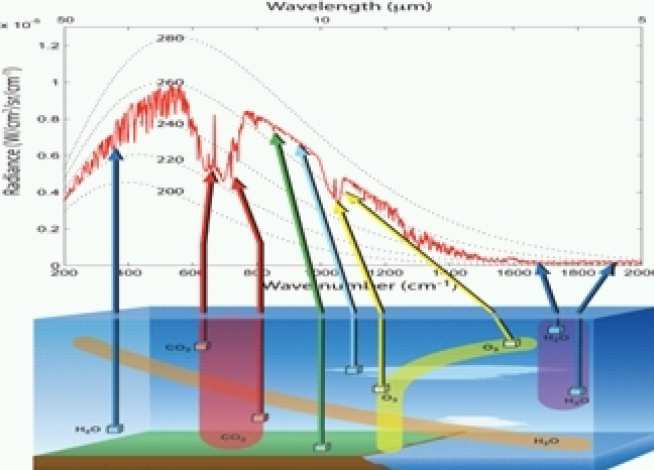The Climate Absolute Radiance and Refractivity Observatory (CLARREO) is one of the top four 'Tier 1' missions identified in the US Decadal Survey. The mission concept represents a new phase in space based monitoring of climate, being specifically designed to provide stable observations at very high absolute accuracy, traceable to internationally recognised measurement standards, at the spectral, temporal and spatial scales necessary to detect subtle climate trends.

The direct observation and monitoring of the critical climate processes that control the radiative balance of the Earth, including direct cooling to space from the surface, water vapour and lapse rate feedbacks, absorption and emission due to well mixed greenhouse gases and ozone, and the effects of clouds and aerosol (Figure 1) will provide a stringent test of our current generation of climate models. In addition, because of their high absolute accuracy and resolution, CLARREO measurements can be used to calibrate other, non-climate optimised operational and research systems. Hence, the mission will act as an anchor for the climate observing system as a whole, providing benchmark, climate focused measurements that will stand the test of time and can be used to inform policy direction.
Members of SPAT are currently working with NASA colleagues as part of the ongoing pre-phase A studies. Our contribution includes the use of observed and model based estimates of the spectrally resolved OLR to probe the natural variability manifested within the spectra over a range of time-scales. We are particularly interested in identifying the combination of spectral regions which show the most promise in terms of being able to detect decadal scale and longer term change, and how these may be attributed to specific climate processes. In addition, we are developing instrument models which will be used to understand and evaluate the in-flight performance of CLARREO, as well as contributing to studies assessing how the spacecraft orbital sampling pattern affects the accuracy of the final data products.
Contact: h.brindley@imperial.ac.uk